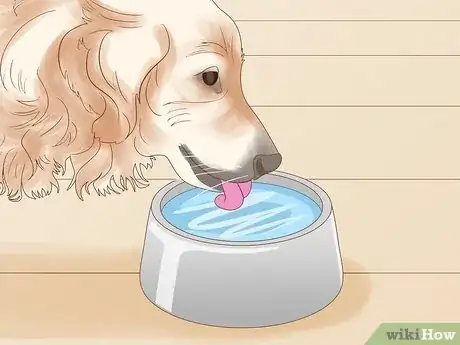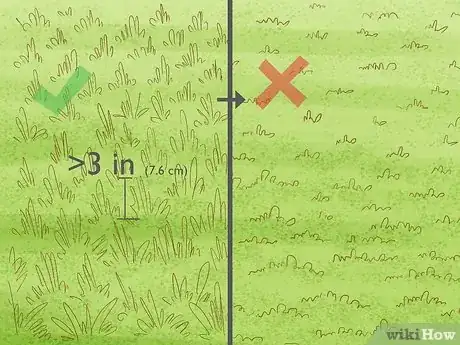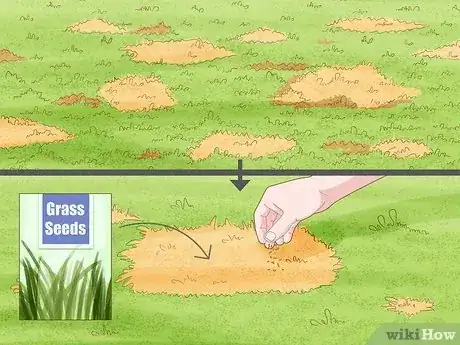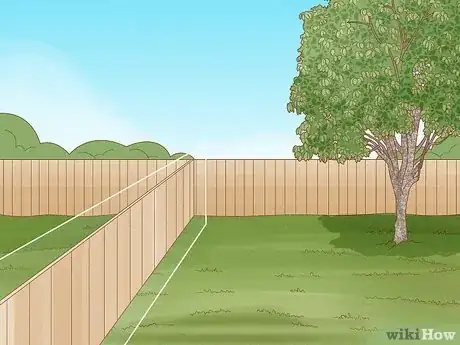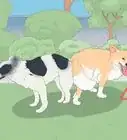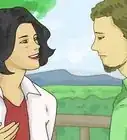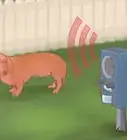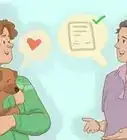This article was co-authored by Beverly Ulbrich and by wikiHow staff writer, Hunter Rising. Beverly Ulbrich is a Dog Behaviorist and Trainer and the Founder of The Pooch Coach, a private dog training business based in the San Francisco Bay Area. She is a Certified CGC (Canine Good Citizen) Evaluator by the American Kennel Club and has served on the Board of Directors for the American Humane Association and Rocket Dog Rescue. She has been voted the best private dog trainer in the San Francisco Bay Area 4 times by SF Chronicle and by Bay Woof, and she has won 4 "Top Dog Blog" awards. She has also been featured on TV as a dog behavior expert. Beverly has over 18 years of dog behavior training experience and specializes in dog aggression and anxiety training. She has a Master of Business Administration from Santa Clara University and a BS from Rutgers University.
There are 7 references cited in this article, which can be found at the bottom of the page.
This article has been viewed 2,970 times.
You love your pup, but you're probably not a big fan of the brown or yellow spots they leave in your yard. When dog pee kills your grass, either the urine is too concentrated or your lawn is already stressed out. Lucky for you, we've got solutions for both problems. Keep reading for all of the best fixes to save your lawn and prevent dead spots from showing up!
Steps
Water the spot right after your dog goes.
-
Water flushes the urine out of the soil. It’s best to water the spot as soon as your dog pees, but it’s still an effective solution up to 8 hours later. Fill a watering can and pour 3 times as much water as urine over the spot.[1] X Research source
- If you wait longer than 12 hours after your dog goes potty, there’s a higher risk of damaging your lawn.
- While there are lawn repair treatments that claim to flush the urine out, water is effective enough on its own.
Lead your dog to a different spot each time it goes.
-
Your grass is more likely to die if your dog pees in the same spot. Dog urine causes your grass to die because nitrates build up in the soil. Put your dog on a leash and take it to a different spot each time you take it outside. That way, the spots are spread out and less likely to build up.[2] X Research source
Walk your dog when it needs to go.
-
Take your dog somewhere else so your lawn stays pristine. Rather than letting your dog soil your lawn, leash it up and walk it to the nearest public area, patch of dying grass, or dog park. Your dog will love going outside and getting exercise, and you won’t have to worry about your lawn.[3] X Research source
- Try to avoid letting your dog go potty on your neighbor’s lawns so you don’t kill their grass.
Encourage your dog to drink water.
-
The extra water dilutes your dog’s urine. Make sure you fill up your dog’s water bowl whenever it’s low or empty. Give your dog some extra water after you exercise it so it doesn’t get dehydrated. As your dog drinks more, it helps neutralize the nitrates in urine that cause dead spots in your lawn.[4] X Research source
- Drinking more water may make your dog go potty more frequently.
Wet your dog’s food before it eats.
-
Added moisture makes your dog’s urine less concentrated. Water will make dry food easier for your dog to eat and helps it stay hydrated. Just put a splash of water into your dog’s food bowl and mix it around to wet the kibble.[5] X Research source
- You could also buy canned dog food since it has a higher moisture content than kibble.
- You can try adding salt, garlic, or tomato juice to your dog’s food since salts make it drink more water, but always talk to a vet before you make any adjustments to your dog’s diet.[6] X Research source
Mow your lawn so it’s 3 in (7.6 cm) or taller.
-
Keeping your grass taller makes it more resilient to dog pee. When you cut your grass any shorter, it stresses your turf and makes it more likely to get damaged. Set your mower height to at least 3 in (7.6 cm) before you start so your grass stays a little on the longer side.[7] X Research source
- Try to only remove one-third of the height from your turf at a time, or else it will get stressed.
Irrigate your lawn once a week.
-
Deep watering regularly rinses dog pee out of the soil. During a drought, salts can accumulate in your soil when it’s dry out and make your grass die faster. Wait to water until the soil feels dry or when you can see footprints in the grass after walking on it. Set out a sprinkler and let it run so the soil about 1–2 inches (2.5–5.1 cm) down feels damp.[8] X Research source
Apply a timed-release nitrogen fertilizer to your lawn.
-
Your lawn will have a more consistent color and make spots less noticeable. Fertilized lawns are less likely to be affected by dog urine so it’s a great preventative step to take.[9] X Research source Spread either solid or liquid fertilizer with nitrogen over your entire lawn so it stays healthy. Spread the fertilizer in the early spring or summer when the grass is actively growing.[10] X Research source
- Fertilizer won’t revive brown spots already in your lawn.
Reseed dead patches with urine-tolerant turf.
-
Turf like bermudagrass and tall fescue are less likely to get damaged. Clear out the dead patches of grass with a hoe or tiller so you can plant your grass seeds. Keep your dog away from the new seeds and water the spot whenever the soil dries out so the new grass grows in well.[11] X Research source
- Zoysiagrass and perennial ryegrass are also really good at tolerating dog pee.
- If you don’t want to wait for grass seed to grow, then lay sod in the area instead.
- Some grasses will naturally recover from dead patches and dog urine, but it could take a few months.
Set up a designated potty spot without grass.
-
Leading your dog to a patch of mulch or pea gravel keeps your lawn safe. Pick a spot in your yard where you want your dog to go potty and lead it there every time you take it out. Say a command like “Go potty” or “Potty time” before your dog starts going and reward it when it finishes. After a few times, your dog will be trained on the new spot and be less likely to pee anywhere else in your yard.[12] X Expert Source

Dog Behaviorist & Trainer Expert Interview. 4 March 2020.
Put up a fence to keep out neighborhood dogs.
-
Dogs won’t be able to get in so your lawn will stay healthy. You can fence off the whole yard or a small area of grass that you want to protect.[13] X Expert Source

Dog Behaviorist & Trainer Expert Interview. 4 March 2020. If you’re just concerned about dogs peeing on your grass while they’re on a walk, a short decorative fence around your perimeter can be enough to deter them.- If you have a large dog or are worried about a dog jumping over the fence, then install one that’s about 5–6 ft (1.5–1.8 m) tall instead.
- You may need a building permit to put up a fence on your property, so check your local housing laws.
Warnings
- Avoid giving your dog supplements that claim to change the pH of your dog’s urine, like D-I, methionine, and ascorbic acid, since there isn’t evidence that they’re effective and they could cause urinary tract problems.[15] X Research source⧼thumbs_response⧽
You Might Also Like
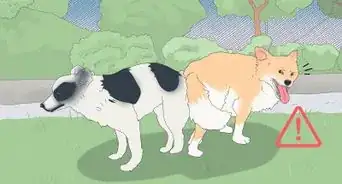 How Long Does it Take for Dogs to Get Unstuck After Mating?
How Long Does it Take for Dogs to Get Unstuck After Mating?
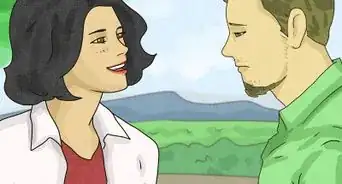 10 Comforting Things to Say (or Text) to a Friend When Their Dog Dies
10 Comforting Things to Say (or Text) to a Friend When Their Dog Dies

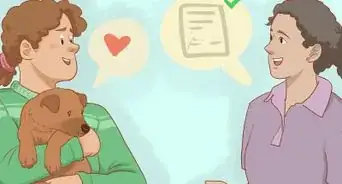 How to Sell Puppies
How to Sell Puppies
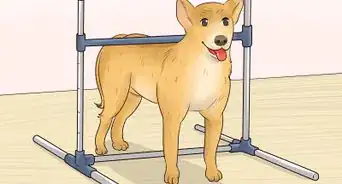
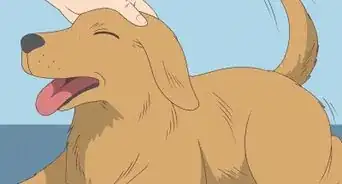 12 Common Reasons Why Dogs Put Their Ears Back
12 Common Reasons Why Dogs Put Their Ears Back
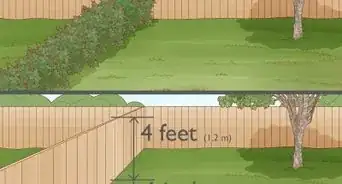 How to Get Dogs to Stop Eating Rabbit Poop
How to Get Dogs to Stop Eating Rabbit Poop
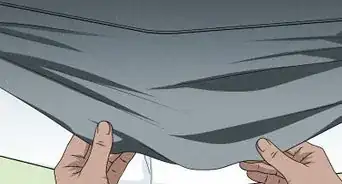 How to Clean Dog Pee from a Mattress
How to Clean Dog Pee from a Mattress
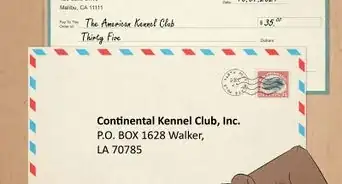
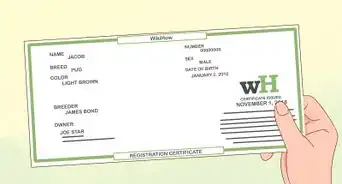

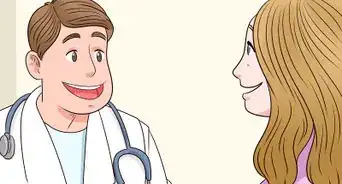
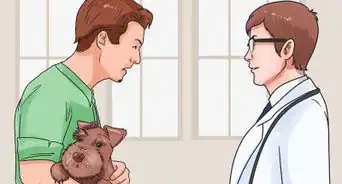
References
- ↑ https://ipm.missouri.edu/MEG/2010/6/Beautiful-Lawns-and-Pets-Not-Exactly-a-Match-Made-in-Heaven/
- ↑ https://www.ctahr.hawaii.edu/oc/freepubs/pdf/TM-11.pdf
- ↑ https://www.extension.purdue.edu/extmedia/ay/ay-327-w.pdf
- ↑ https://cmg.extension.colostate.edu/Gardennotes/553.pdf
- ↑ https://aggie-horticulture.tamu.edu/plantanswers/turf/Dog_lawn_problems.html
- ↑ https://cmg.extension.colostate.edu/Gardennotes/553.pdf
- ↑ https://www.extension.purdue.edu/extmedia/ay/ay-327-w.pdf
- ↑ https://cmg.extension.colostate.edu/Gardennotes/553.pdf
- ↑ https://content.ces.ncsu.edu/dogs-and-turfgrass-interactions
- ↑ https://www.extension.purdue.edu/extmedia/ay/ay-327-w.pdf
- ↑ https://content.ces.ncsu.edu/dogs-and-turfgrass-interactions
- ↑ Beverly Ulbrich. Dog Behaviorist & Trainer. Expert Interview. 4 March 2020.
- ↑ Beverly Ulbrich. Dog Behaviorist & Trainer. Expert Interview. 4 March 2020.
- ↑ https://cmg.extension.colostate.edu/Gardennotes/553.pdf
- ↑ https://cmg.extension.colostate.edu/Gardennotes/553.pdf
About This Article




